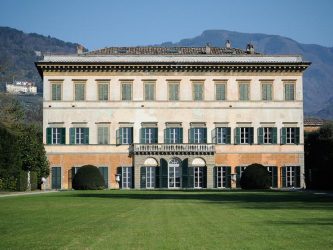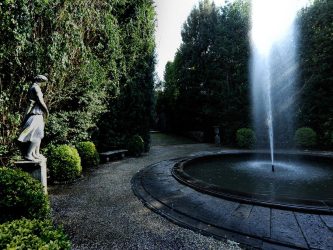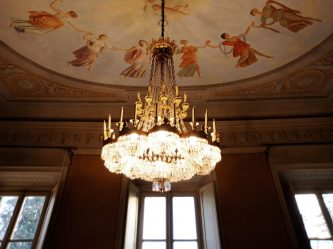Categories more
- Adventures (17)
- Arts / Collectables (15)
- Automotive (37)
- Aviation (11)
- Bath, Body, & Health (77)
- Children (6)
- Cigars / Spirits (32)
- Cuisine (16)
- Design/Architecture (22)
- Electronics (13)
- Entertainment (4)
- Event Planning (5)
- Fashion (46)
- Finance (9)
- Gifts / Misc (6)
- Home Decor (45)
- Jewelry (41)
- Pets (3)
- Philanthropy (1)
- Real Estate (16)
- Services (23)
- Sports / Golf (14)
- Vacation / Travel (60)
- Watches / Pens (15)
- Wines / Vines (24)
- Yachting / Boating (17)
Published
03/19/2015 by Lionard Luxury Real EstateLucca (Italy) - The famous violinist Paganini used to play during the summer evenings for Napoleon’s sister, Princess Elisa Bonaparte Baciocchi, in the spectacular Green Theatre.
We are talking about the most celebrated historic villas in the province if Lucca, Villa Reale di Marlia, that has been sold by Lionard Luxury Real Estate (http://www.lionard.com/). The estate was bought from the Pecci Blunt Counts, by a Swiss couple, who, after having it accurately restored, under the surveillance of the Arts Council, will open a dream hotel that aspires to be one of the prime extra luxury hotels in Italy.
Among one of the most representative Italian historic dwellings, Villa Reale di Marlia (http://www.lionard.com/pressarea/2015/sold-villa-reale) is one of the Monumental Villas of Lucca, which were built in the 15th century in the countryside surrounding the town of Lucca, by rich bankers and silk merchant. It was then brought to notoriety by Elisa Bonaparte Baciocchi, crowned princess of Lucca and Piombino and Grand Duchess of Tuscany, who bought Villa di Marlia in 1806 and the nearby Villa del Vescovo uniting them into a single property.
The villa is surrounded by a 19 hectare English style park, with parts of the garden original from the 1600s, including the magnificent Green Theatre that was created in 1652: an open air theatre, with walls of yew hedges and statues in terracotta, representing the characters of the Commedia dell’ Arte. The interiors of the villa include an overall floor surface of 18,000 m2. Among the numerous rooms of the villa is the grand ballroom where the princess used to give memorable parties; here the great violinist Niccolò Paganini directed the orchestra. Rumours at court suggested a love affair between the two.
Villa Reale di Marlia is one of 70 historic villas and estates in the area of Lucca that Lionard Luxury Real Estate holds in its portfolio, two of which are the magnificent Villa Brugier an Villa San Pancrazio. These estates mainly date back to the 16th and 17th century, they are “of great value for the asking price, and are particularly attractive to foreign buyers”, as stated by Dimitri Corti, managing director of the Lionard Luxury Real Estate. Last year alone we sold five important properties in the Lucca area, for an average size between 1000 and 3000 m2.
Elisa ordered that the building should be renovated in neoclassical style and also had the garden landscaped in fashion of the time, of which the Prince of Metternich enthusiastically wrote that he had never seen such a garden of English style, and with such a variety of plants, in Italy. Fortunately the princess left untouched part of the 16th century garden, which have been preserved to this day: the Water Theatre, Pan’s Grotto and the most precious gem: the Green Theatre.
After the fall of Napoleon, Elisa abandoned the Villa di Marlia which became property of the Duchess of Parma and then of the Asburgo Lorena family. With the unity of Italy it passed onto Victor Emanuel II of Savoy, first king of Italy, and was then made over to Prince Carlo Prince of Bourbon, who was disinherited for having married Penelope Smith Ballynatray from Ireland, a woman of lesser status. At their death (they are now buried in the Park’s Chapel), the villa was inherited by their son who died in 1918, known as the “Mad Prince” for his religious obsessions and eccentric behaviour. The villa was then put up for sale in order to pay off debts, the furniture was sold on auction and many trees from the garden were cut down for wood. The villa was then abandoned and finally purchased by the Cou nts Pecci Blunt (Countess Laetitia Pecci and the New York banker Cecil Blumenthal, Blunt for short, parents of last owners), fortunately managing to save the property from distruction.

















